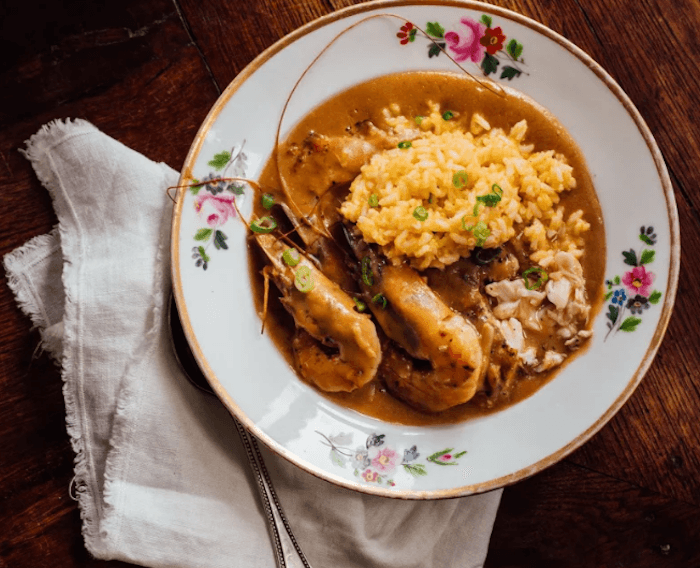Maw Maw Toups’ Gulf Seafood Couvillion
This is my grandmother’s seafood stew recipe. She was hell on wheels with a fishing pole. If she was making couvillion, she’d catch the fish and clean it herself. In fact, she liked fishing so much she stocked her swimming pool with fish to catch. No joke. It was a legit cement pond. Yeah, we’re country.She’d put a whole fish in this couvillion, usually speckled trout or redfish, scaled and gutted but with the head on. The fish would break down in the pot and thicken and season the broth. Once the fish fell apart, she knew the couvillion was done.






